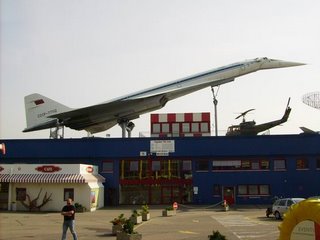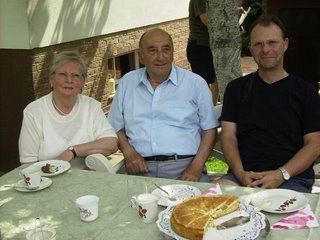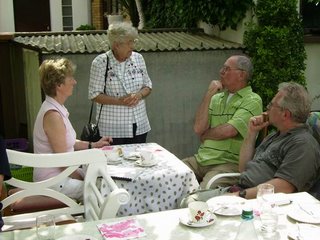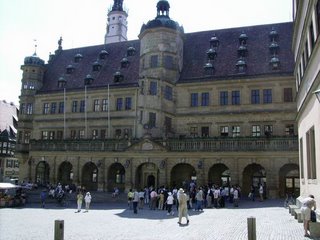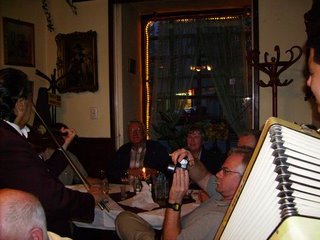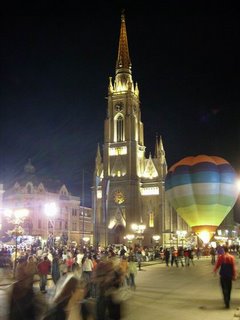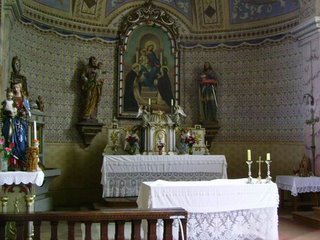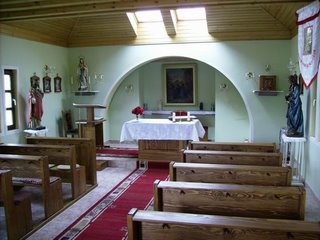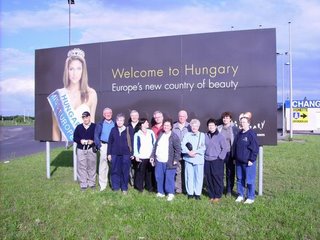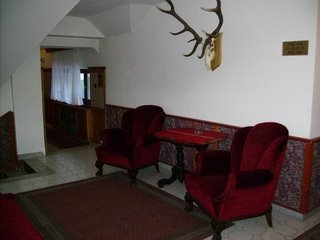Friday, June 16 – Kelsterbach (Frankfurt Airport)
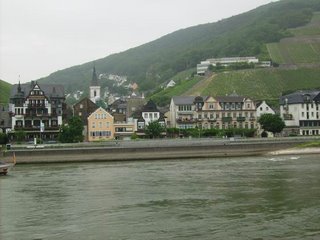 Today was our Rhein Cruise day. We drove to Bingen, a few km west of Mainz to catch the cruise. We booked a one way trip up to St. Goar and Helmut met us there with the bus. A return trip would obviously have been more efficient, but our trip would have been 4 hours instead of 1.5 hours and we would have been looking at the same scenery twice. Unfortunately, the day was cool, windy, cloudy, and a bit foggy or hazy so visibility was reduced. This spoiled the pictures and some of the enjoyment, but we still had the experience.
Today was our Rhein Cruise day. We drove to Bingen, a few km west of Mainz to catch the cruise. We booked a one way trip up to St. Goar and Helmut met us there with the bus. A return trip would obviously have been more efficient, but our trip would have been 4 hours instead of 1.5 hours and we would have been looking at the same scenery twice. Unfortunately, the day was cool, windy, cloudy, and a bit foggy or hazy so visibility was reduced. This spoiled the pictures and some of the enjoyment, but we still had the experience.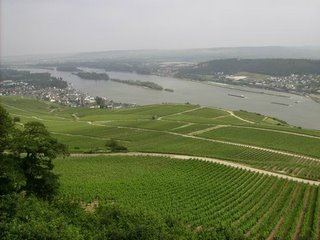 From St. Goar we drove back to Bingen and rode the ferry across to Rudesheim. Helmut dropped us off for a brief exploration of a very touristy section called Drosselgasse, and then we rendezvoused for lunch. After lunch, most of us rode a chair lift to the top of the valley where there was a large statue with a lookout and park. The day had begun to clear, so we were able to take a few pictures.
From St. Goar we drove back to Bingen and rode the ferry across to Rudesheim. Helmut dropped us off for a brief exploration of a very touristy section called Drosselgasse, and then we rendezvoused for lunch. After lunch, most of us rode a chair lift to the top of the valley where there was a large statue with a lookout and park. The day had begun to clear, so we were able to take a few pictures.When we returned to the bus, we presented Helmut with a tip and souvenir in appreciation of all his services. We thought that it would be too chaotic at the hotel with everyone scrambling for luggage and checking in. He said that we were the best group he had ever driven, and we like to think that he meant it. He certainly seemed to enjoy himself almost as much as we did.
It was a sad parting. We couldn’t have asked for a better driver. He was not only our driver, but our guide, interpreter, photographer, and friend. We were all virtual strangers thrown together in this common enterprise and Helmut became as much a member of our group as anyone. He was continuously coming up with unexpected gestures of thoughtfulness. He had his ear to the ground and bought cough candies for those with the cough that worked its way through the group, food and candy items for us to sample, as well as responding to many other needs where no help was asked, but it was freely given anyway. In one particular incident, Betty had said that she was looking for a soccer jersey of a World Cup team for a grandchild, but had not been able to find what she wanted. Helmut came back from an excursion with an official World Cup children’s size jersey and shorts. We have particularly appreciated his efforts through the back pain which has plagued him since Sindelfingen. He has been absolutely great in every way.
From there it was on to the hotel. Helmut joined the group as they had some wine while I tried to find out what to do about my passport, which still had not arrived from Budapest. I had asked them to send it by courier, but they sent it by “Urgent Post.” I guess their idea of urgent post is different from mine. Foreign Affairs said that they could fax a letter if I could get a name and fax number at Air Canada. Much easier said than done. After listening to half a dozen voice mail choices and waiting for a long time for an actual human being to talk to, we decided to drive to the airport, which was only a short distance away. But when we got there, the counter was closed and there was no one around. The lady at information gave us some phone and fax numbers, but, with no names, Foreign Affairs would not send the letter. We went back to the hotel where I again phoned Foreign Affairs. They clarified that I could pull this off in the morning while I was checking in. Baz Fritz offered to pick the passport up if it arrives tomorrow – they have Saturday mail delivery here. He would then carry it by hand to China and send it back with some friends who are returning to Saskatchewan next week. I feel safer with that option than with using mail again. With great relief, I set in repacking for tomorrow’s journey along with everyone else.
Meanwhile, the weather had continued to improve until it was clear, sunny, and warm by supper time.
Unless there is some real excitement tomorrow, this will be the end of our story. Hope you enjoyed sharing in our experience.
Glenn Schwartz


